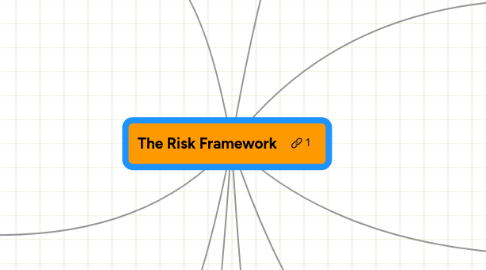
1. This Map is copyright (C) 2013 Causal Capital
2. 1 Introduction
2.1. 1.1 Objective of this book
2.1.1. 1.1.1 Who is this book for
2.1.2. 1.1.2 What are we trying to achieve
2.2. 1.2 Definition of risk management
2.3. 1.3 About this author
2.4. 1.4 History of risk management
2.5. 1.5 Risk management in industry today
2.6. 1.6 Risk Categorisation
2.7. 1.7 The role of the risk manager
2.7.1. 1.7.1 Why is this important
2.8. 1.8 Plug and play components
2.9. 1.9 Project Management
2.9.1. 1.9.1 A typical project
2.9.2. 1.9.2 What tends to go wrong
3. 2 Credit Risk
3.1. 2.1 Expected Loss
3.2. 2.2 Unexpected Loss
3.2.1. 2.2.1 Countercyclical
3.2.2. 2.2.2 Concentration Risk
3.3. 2.3 Probability of Default
3.3.1. 2.3.1 Credit Assessment
3.3.1.1. 2.3.1.1 Origination Scoring
3.3.2. 2.3.2 External Ratings
3.3.3. 2.3.3 Credit Spreads
3.4. 2.4 Tying risk to policy
3.4.1. 2.4.1 Human Policy
3.4.1.1. 2.4.1.1 Tracking Risk Appetite
3.4.2. 2.4.2 Testing Credit Risk Systems
4. 3 Counterparty Risk
4.1. 3.1 Traded positions
4.1.1. 4.2.1 Component PFE and DSL
4.2. 3.2 Collateral
4.3. 3.3 PFE and DSL
4.4. 3.4 Netting
4.5. 3.5 Reporting Counterparty Risk
4.6. 3.6 Tying risk to policy
4.6.1. 3.6.1 Human Policy
4.6.1.1. 3.6.1.1 Limit Setting
4.6.2. 3.6.2 Testing Ctp Risk Systems
5. 4 Market Risk
5.1. 4.1 Traded positions
5.1.1. 4.1.1 The Greeks
5.2. 4.2 Value at Risk
5.3. 4.3 Asset Liability Management
5.4. 4.4 Reporting market risk
5.5. 4.5 Tying risk to policy
5.5.1. 4.5.1 Human Policy
5.5.1.1. 4.5.1.1 Tracking Risk Appetite
5.5.1.2. 4.5.1.1 Limit Setting
5.5.2. 4.5.2 Testing Market Risk Systems
6. 7 Operational Risk
6.1. 7.1 Framework Elements
6.1.1. 7.2 Loss Incident Reporting
6.1.1.1. 7.2.1 Internal Data
6.1.1.2. 7.2.2 External Data
6.1.2. 7.3 RCSA
6.1.3. 7.4 KRI
6.1.4. 7.5 Scenario Analysis
6.1.5. 7.6 OpVaR
6.1.5.1. 7.6.1 Expected Loss
6.1.5.2. 7.6.2 Unexpected Loss
6.1.6. 7.7 Tying risk to policy
6.1.6.1. 7.7.1 Human Policy
6.1.6.2. 7.7.2 Testing Op Risk Systems
6.1.6.3. 7.7.3 Tracking Risk Appetite
7. 8 Enterprise Risk
7.1. 8.1 The challenges
7.2. 8.2 Reporting
7.2.1. 8.2.1 The Heatmap
7.3. 8.3 Components to use
8. 9 Economic Capital
8.1. 9.1 Aggregating Exposure
8.2. 9.2 Transfer price systems
8.3. 9.3 Financial Performance
8.4. 9.4 ALCO
8.4.1. 9.4.1 Liquidity Funding
8.4.1.1. 9.4.1.1 What is liquidity funding
8.4.1.2. 9.4.1.2 Impacts of leverage
8.4.1.3. 9.4.1.3 Measuring Cashflow
8.4.1.4. 9.4.1.4 Closing Positions
8.4.2. 9.4.2 ALCO Reports
8.5. 9.5 Stress Testing
8.6. 9.6 Risk Appetite
8.7. 9.7 Risk Governance
8.7.1. 9.7.1 Connecting to Finance Systems
8.7.1.1. 9.7.1.1 Multiple Mark to Markets
8.7.1.2. 9.7.1.2 Backtesting
8.7.2. 9.7.2 Auditing the risk framework
9. 6 Risk Standards
9.1. 6.1 Basel II
9.2. 6.2 Basel III
9.3. 6.3 ISO 310000
9.4. 6.4 COSO
9.5. 6.5 Solvency II
10. 5 Risk Systems
10.1. 5.1 Commercial Risk Systems
10.1.1. 5.1.1 Credit Risk
10.1.1.1. 5.1.1.1 KMV
10.1.1.2. 5.1.1.2 Credit Metrics
10.2. 5.2 Database and Datamining
10.3. 5.3 Statistical Systems [R-Project]
10.4. 5.4 Reporting
10.4.1. 5.4.1 Dashboards

